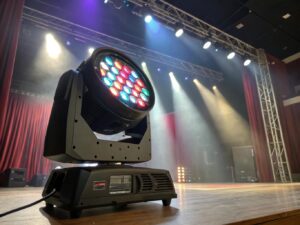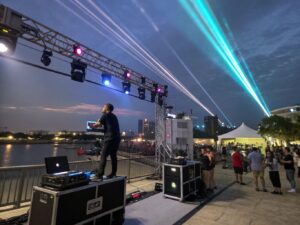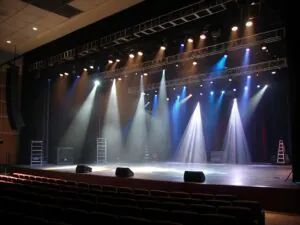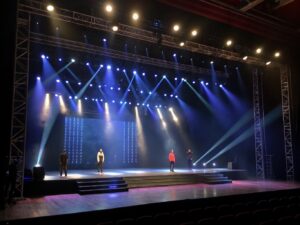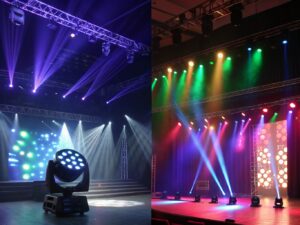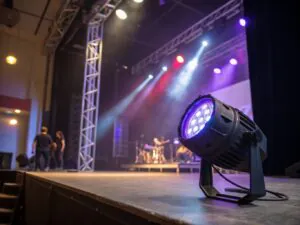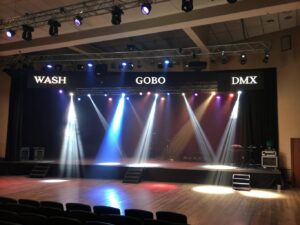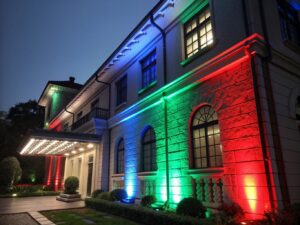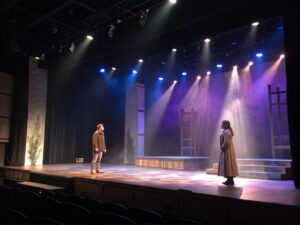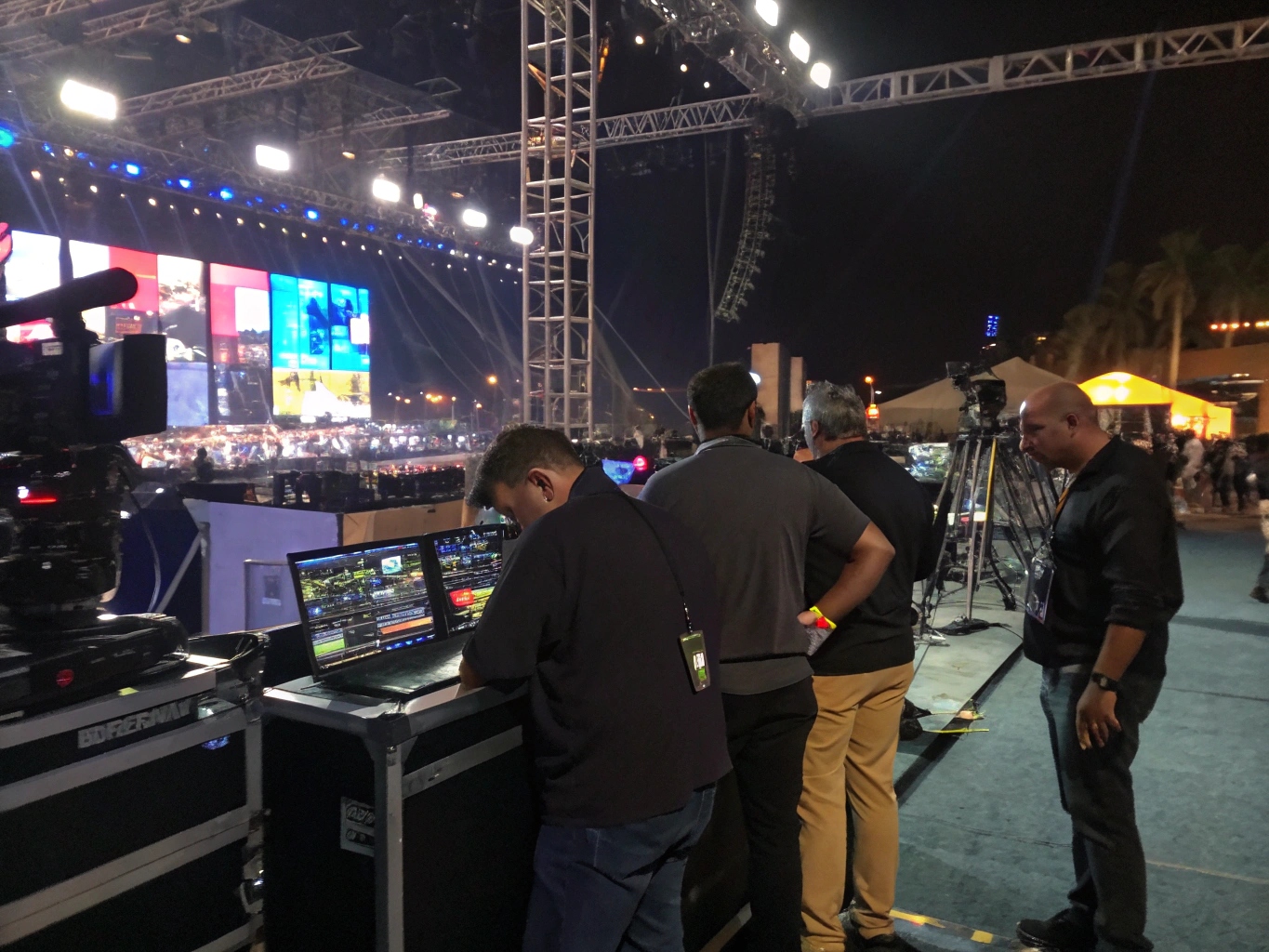
How Do You Choose the Right Stage Lighting for Any Event?
Planning event lighting feels complex and overwhelming. Choosing the wrong fixtures can lead to a dull event and a wasted budget, creating stress you don't need before a big day.
Choose the right lighting by following a four-stage process: first, understand the basics of fixtures and technology. Second, define your specific event's needs. Third, plan your budget and control. Finally, execute with a pre-show checklist.

In my 19 years in this industry, I've lit everything from massive rock concerts to intimate weddings. The tools change, but the process for creating amazing results doesn't. It always comes down to a clear, step-by-step plan. My philosophy, "quality is life, innovation is soul," means using the best technology (the innovation) reliably (the quality). As your trusted partner in light, my goal isn't just to provide equipment; it's to guide you through this process. This four-stage guide is the exact framework I use myself to ensure every event is a success. Let's walk through it together.
Stage 1: How Do You Understand the Basics of Stage Lighting?
The world of lighting is full of jargon like "gobo," "DMX," and "throw distance1." You're afraid to ask basic questions and risk making costly mistakes because you don't know where to start.
Understand the basics by focusing on three things: why lighting is critical for success, the core jobs of different lights (Key, Wash, Effect), and the practical benefits of modern LED technology2 over old, traditional lamps.

To build anything great, you need a strong foundation. In lighting, that foundation is understanding the "why" and the "what." Why does it matter so much? Because light tells the audience where to look and what to feel. It’s the single most powerful tool for creating a mood. From there, you learn your core tools. I tell every new technician to think of lights in terms of their job function, not just their model number. A technician like Nick knows that you need the right tool for the right job. Is its job to make someone visible? Is its job to paint a backdrop with color? Or is its job to create an exciting visual effect? Finally, understanding why LED is the modern standard helps you make smart, future-proof decisions that save money and unlock creative potential.
| Feature | LED Lights | Traditional Lights (Incandescent/Discharge) |
|---|---|---|
| Why it Matters | Professional lighting creates mood, focus, and excitement, transforming a space and engaging the audience. Poor lighting can ruin an otherwise great event. | |
| Core Fixtures | Key Light: (e.g., Profile Spot) For visibility. Makes the subject stand out. Wash Light: (e.g., PAR Can) For atmosphere. Covers large areas in color. Effect Light: (e.g., Moving Head) For energy. Creates movement and patterns. |
|
| Tech Choice | Low power, low heat, long life (20,000+ hrs), excellent color. | High power, very hot, short life (750-2,000 hrs), limited color options. |
Stage 2: How Do You Define Your Event's Lighting Needs?
You have a general idea for your lighting, but you don't know how to translate it into a specific plan. A setup that works for a concert will fail miserably at a corporate conference.
Define your needs by analyzing the event type3 (e.g., concert vs. conference), measuring the venue to determine the power and quantity of fixtures, and deciding on the specific atmosphere you want to create using color and effects.

This stage is all about asking the right questions. The key to successful lighting design is that it must serve the event, not distract from it. Before I spec a single light, I need to know everything about the event's purpose. Is the goal to get people dancing? Or is it to make a CEO on stage look confident and clear on camera? The needs are completely different. Once you know the goal, you can look at the physical space. A large ballroom needs more powerful lights to cover the distance than a small club. Finally, you get to the fun part: the mood. This is where you translate feelings into colors, textures, and effects. Do you want it to feel warm and romantic, or cool, professional, and high-tech?
-
Customize by Event Type:
- Concerts: Dynamic, fast-moving lights, intense color changes, aerial effects.
- Conferences: Bright, high-quality white light (high CRI) focused on the stage and speaker. Minimal distractions.
- Weddings: Soft, warm colors (ambers, pinks), patterned gobos on the dance floor, and elegant uplighting.
- Theatre: Highly controlled, precise lighting that directs focus and creates a strong, scene-specific mood.
-
Match Lighting to Venue Size: You need to consider the "throw distance1." A fixture that looks bright in a small room will be too dim in a large hall. Always check a fixture’s specifications to ensure it’s powerful enough for your space.
Stage 3: How Do You Plan Control, Budget, and Logistics?
You have a great idea and know what you need, but you haven't planned the practical side. You might run out of money, rent the wrong gear, or realize you don't know how to control the lights.
Plan by choosing a control system that matches your needs (simple manual vs. DMX), setting a realistic budget that includes all costs, deciding if renting or buying is more cost-effective, and determining if you need to hire a professional.

This is the stage where a vision becomes an actionable plan. My "quality is life" philosophy applies strongly here—a quality plan prevents failure. First, how will you control the lights? For a simple static look, a manual fader might be enough. For a dynamic show with moving lights and timed cues, you need a DMX controller and someone who knows how to program it. Next, budget honestly. Don't just budget for the lights themselves; include costs for rigging, cables, power, transport, and labor. Then, make the classic decision: rent or buy? For a one-off event, renting is almost always the smart choice. If you run the same type of event frequently, buying can be a good long-term investment. Finally, be honest about your own skills. If your plan involves more than a few simple lights, hiring a professional lighting designer or technician is the best investment you can make.
| Planning Step | Key Question | Recommendation |
|---|---|---|
| Control System | Do you need static looks or dynamic cues? | Manual: Simple setups. DMX: Any show with movement or multiple scenes. |
| Budgeting | Have you included all associated costs? | List hardware, rigging, power, labor, and transport to avoid surprises. |
| Rent vs. Buy | How often will you use this equipment? | Rent: For one-off events or to test gear. Buy: For frequent, repeated use. |
| Hire a Pro? | Is the setup complex or the event high-stakes? | Yes. If you need DMX programming, rigging, or guaranteed results, hire a pro. |
Your final execution checklist is simple: coordinate with all other departments (audio, video, set design) for cohesion, and conduct a full technical rehearsal to test every single lighting cue and fixture before the doors open.

Execution is everything. You can have the best plan in the world, but if it's not implemented correctly, the show will suffer. The first rule of execution is communication. Your lighting can't exist in a vacuum. I always make sure my lighting team talks to the video team to avoid washing out their screens. We talk to the audio team to sync lighting cues with musical hits. We work with the set designer to highlight their work, not hide it. It must be a collaborative effort. The second, and most critical, rule is to do a full run-through. We call this a "tech rehearsal." This isn't just about checking if the lights turn on. It's about running the entire show, cue by cue, to find problems. I can't even count the number of times a simple rehearsal has saved a show by revealing a bad cable, a mis-programmed cue, or a fixture that was aimed at the wrong spot. There is no substitute for a full rehearsal.
Conclusion
By using this four-stage guide, you can confidently navigate the complexities of stage lighting and create a professional, unforgettable experience that brings your unique vision to life for any event.
You may also be interested in:
